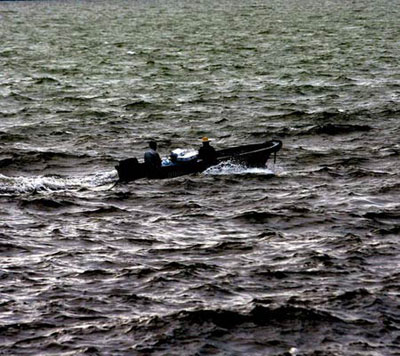| Home / Environment / News | Tools: Save | Print | E-mail | Most Read |
| Red Tide Returns to Shenzhen Coastal Area |
| Adjust font size: |
A marine algal bloom commonly known as "red tide" has returned to Shenzhen bay, causing serious pollution and killing off many marine plants.
A red tide is caused by a buildup of marine plankton that consume oxygen while releasing toxic substances into the water, killing off fish and plant life.
"This is the biggest red tide that has ever appeared off the city's coast," said Zhou Kai, a marine expert with Shenzhen's municipal sea fishery environment monitoring station. He said this marked the third time this year a red tide had appeared off Shenzhen. The first appeared near Shenzhen bay in January and another appeared near Dameisha last month. Based on the monitoring station's observations, the most recent red tide is mainly west of Shenzhen. The infected area is about 50 sq km. Sea to the east of Shenzhen appears to be free of the plankton at this stage. "We strongly urge the public to stay away from the polluted sea areas and not eat sea products from there," Zhou said. A red tide has also been spotted near neighboring Hong Kong in the past few days, with as many as six beaches in Tunmen and The government of the Hong Kong Special Administrative Region has reminded people not to swim in polluted areas. Zhou said the red tide would recede if it rained. "But the weather remains sunny and hot, which means the red tide is here to stay for now," he added. He said the recent weather conditions were favorable to the plankton. A lot of rain has fallen off Shenzhen's coast in recent months, pulling nitrogen and phosphorous up from the sea bottom. Plankton feed off these nutrients. This, compounded with the hot weather, has helped the plankton breed and spread, Zhou said. He said the red tide would not cause major economic losses because very few people were breeding sea fish in the affected areas. "But the foul smell of the dying algae will be unpleasant for the people living in the affected areas, and the tide's annoying red color will also mar the pleasant view," Zhou said. ( |
| Tools: Save | Print | E-mail | Most Read |
 |
| Related Stories |
|
||
